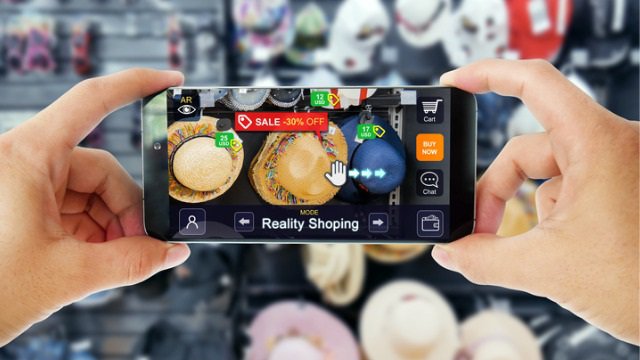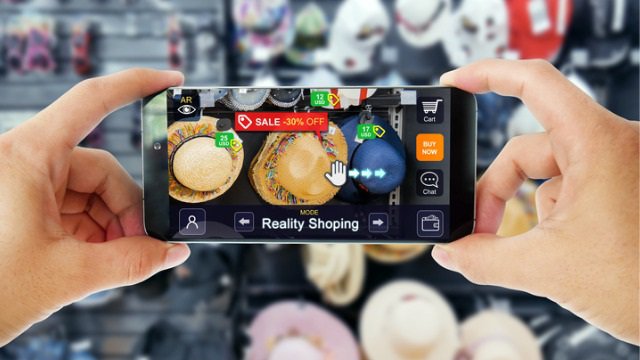Commentary

Photo by iStock.com
By Paul Milner, Displaydata
Both online and offline, technology is booming. Among other digital transformation initiatives, augmented reality (AR) and artificial intelligence have stood out in recent years. Yet, current capabilities are only scratching the surface of what they’ll eventually be able to do. In 2016, the global AI market was worth approximately $3,222, and analysts project year-over-year growth with the market value rising to $11,284 in 2019 and $89,847 in 2025. Similarly, analysts predict the AR market size will grow to $209.2 billion in 2022, up from $6.1 billion in 2016.
With this impending boom, retailers are in a prime position to capitalize on the growing gravitation toward AR and AI in order to make more personalized recommendations to shoppers. After all, customer satisfaction is key.
Enhance store navigation with AR
The widespread use of smart phones makes the device a primary target for implementing AR technology. With smart phones comes mobile apps, and those that feature personalized AR navigation can help retailers deliver a new level of customer engagement in-store. Whether a consumer wants to search for a product by general term, specific brand name, product or unique product code, apps like these enable the shopper to search in a variety of ways, according to their individual needs.
Once a shopper finds the desired product on the app, they can tap on the item to begin navigation from the shopper’s precise location to the product’s shelf location. By simply following their phone’s AR-enabled navigation to each item, the shopper can complete their trip with more ease than ever before. Using AR to better navigate a store according to preferences or existing shopping lists allows customers to experience easier findability and increased discovery of applicable products.
Connected stores which use Electronic Shelf Labels (ESLs) can help facilitate and build on AR functionality. Digital shelves with integrated Bluetooth low energy beacons allow AR-enabled apps to help navigate shoppers towards a product. Once the shopper finds the product, ESLs act as key customer interaction tools, delivering near real-time product info, stock levels, reviews, competitors’ prices and more with speed, agility and consistency. This information can be strategically placed, based on their shopping habits or preferences, and provide special offers or information unique to the shopper, enabling them to view highlights of the product’s shelf location with AR callouts.
AI-driven personalization makes its mark
When it comes to AI and beyond, it’s apparent that personalization tactics increase revenues for retailers and brands. According to Boston Consulting Group’s 2017 “Profiting from Personalization” report, “Brands that create personalized experiences by integrating advanced digital technologies and proprietary data for customers are seeing revenue increase by 6% to 10%, according to our research — two to three times faster than those that don’t.”
Once shoppers are in the store, AI can play a powerful role in creating a rewarding shopping experience. The use of AI-driven personalization for the ecommerce channel might be more common right now, but according to experts, the future of AI is truly limitless – especially in the physical store. According to Tom Savigar, Senior Partner, The Future Laboratory, there is no doubt that the future physical retail will be a mix of the speed and convenience offered by AI — as well as human touch. “Customers want to be engaged through human interaction rather than the theatrics of light and sound, so retailers would do well to create community events and use data to offer personalized in-store experiences,” said Savigar.
Looking to the not so distant future: satisfied shoppers are key
Customers long for the day they can leave a store feeling confident in all of their purchases, unhindered by thoughts that they could have bought more relevant items or annoyance from wasting too much time deciding what to buy. To help shoppers avoid these negative feelings and instead feel a sense of satisfaction and accomplishment, retailers are increasingly making it their mission to help shoppers both determine what they want and find what they need in real time.
Though pegged a technology of the “future,” fully functioning AR and AI technologies are a concept that is not too far off the distant horizon. As retailers revamp their stores with these features, shoppers will feel cared for as they are assisted at every touch point of the process. The result is not only elevated sales, but also the development of loyal shoppers — the key to a thriving business.
Topics: Augmented Reality, Customer Experience, Robotics / AI, Technology
Sponsored Links:

